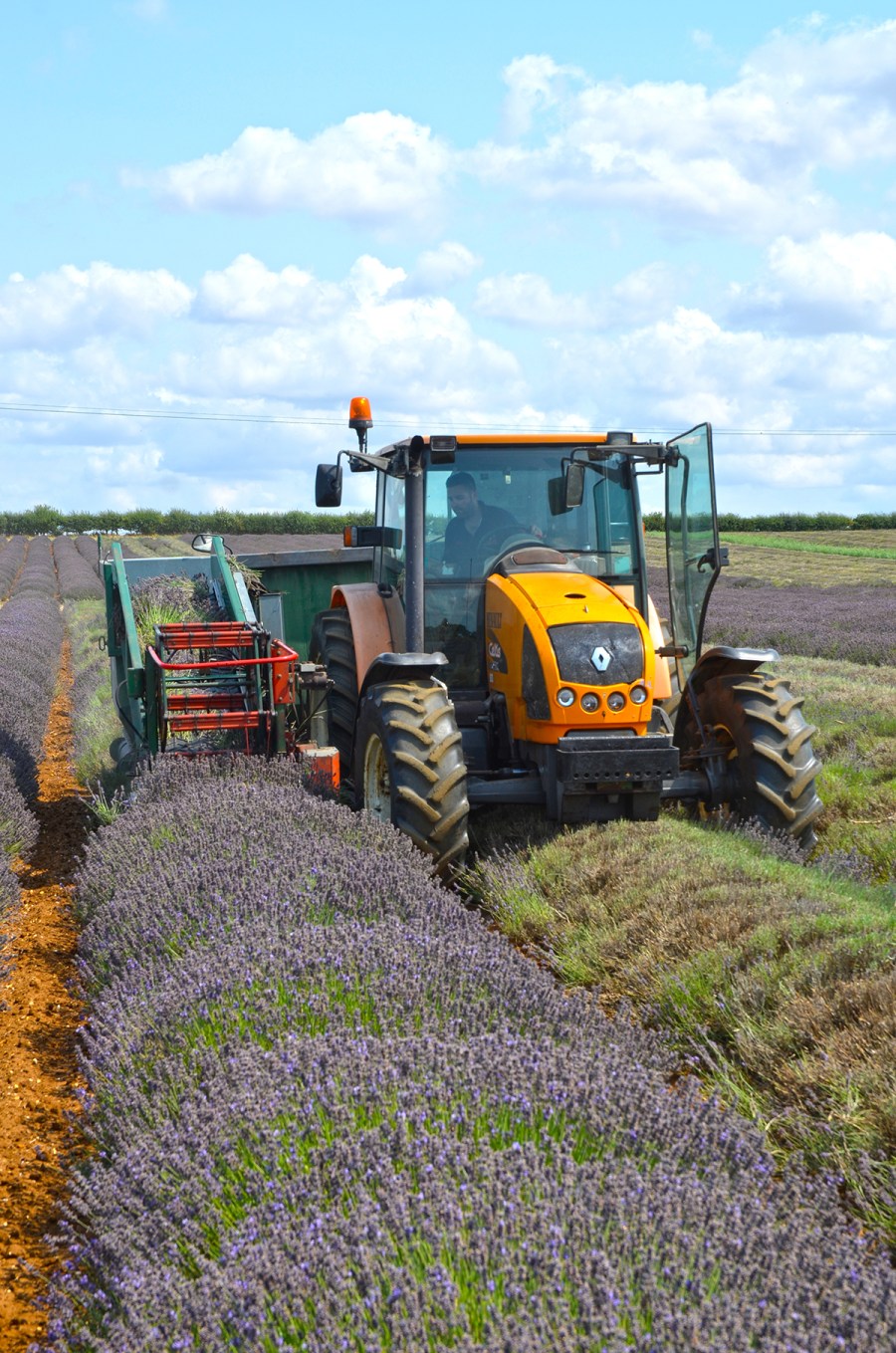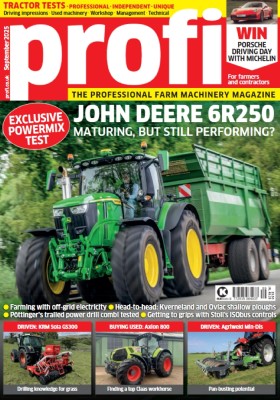Norfolk Lavender revived a bespoke 23-year-old British-built machine to harvest this year’s crop. We find out why.
KEEPING IT BRIEF
- Lavender likes being cut back hard but needs a lot of sunshine and a good draining chalk or a light soil.
- It takes two years for lavender plants to yield enough oil to warrant harvesting. Oil production peaks between years four to eight
- Average oil yield is around 5.0kg/acre, with a peak of up to 8.0kg/ha.
- Lavender plants are generally ripped out after 10-12 years and Norfolk Lavender plants a new field every four years.
- The quality varies between varieties so talking lavender oil process is difficult but generally range from £50-£200/kg. Norfolk Lavender’s in-house bred varieties command the highest prices.
- All lavender oil distilled for Norfolk Lavender is used in its own products.
To the best of our knowledge around 28,000-30,000ha of lavender is grown globally. The biggest area is in France where a large chunk of the 20,000+ha can be found in Provence. With an average production of 1,000t+ of lavender oil a year, France accounts for the lion’s share of the world’s commercial lavender production. Bulgaria is in second place (5,000+ha), and the other top five spots are Australia (approx. 2,000ha), India (500+ha) and North America (500+ha).
Hot dry summers, and mild wet winters on land 500–1,500m above sea level create the ideal conditions for the best-quality, high-oil-content lavender varieties. It might come of a surprise, therefore, to learn that 285ha (700 acres) of the fragrant plants are grown in the UK.
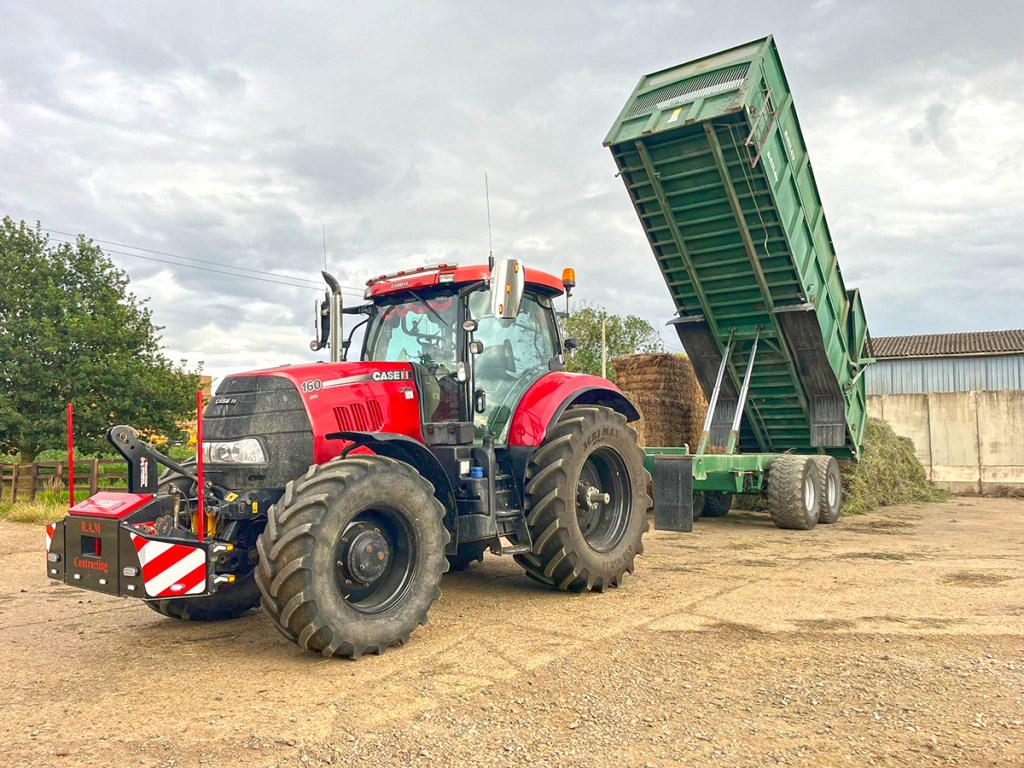
Lower level
There are several smaller operations, and the number of serious growers can be counted on one hand. With 40.5ha (half are young plants), Norfolk Lavender is one of the latter, and is the oldest commercial lavender grower in the country, harvesting its first crop manually in 1933.
Some smaller operations continue to cut the crop by hand even today. Others work with bespoke machines and at least one French-made Clier harvester has crossed the Channel. British growers tend to be very protective of their novel mechanical solutions. Fortunately for us, Norfolk Lavender is not one of them.
Based at Heacham, just three miles south of Hunstanton, Norfolk Lavender has a long history of mechanical harvesters. The first, which was built from an old cultivator frame pulled behind an 8.0hp engine, started work in 1964.
This was kicked into touch by a dedicated self-propelled harvester made by a local engineer in 1971. Operating much like a combine at the time, one man drove it and two others packed lavender into sacks at the rear. Powered by a John Deere engine, and made using many Land Rover parts, it was axed when the current mounted harvester arrived new in 2002.
Back to the frontline
Designed and built by Ely-based David Harrisons, and hitched to a Renault Celtis, the duo worked up until the end of the 2015 season. It was around this time that Norfolk Lavender changed ownership and during the turmoil the business suffered and both tractor and harvester were parked. For quite some time, as it transpires, and the combination remained mothballed up until autumn 2024.
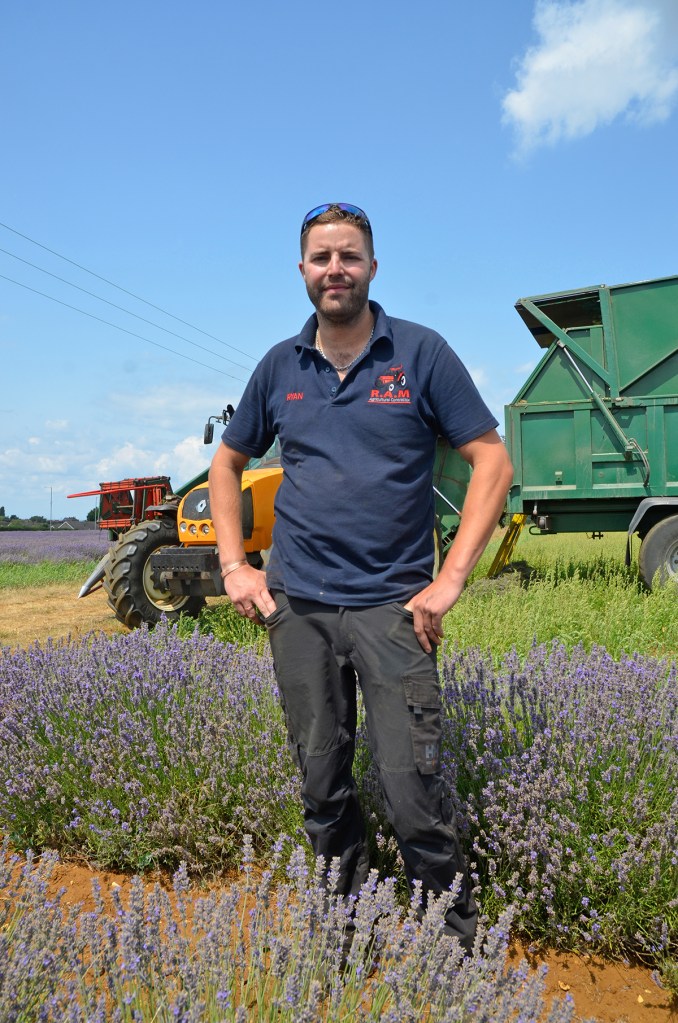
Enter Ryan Moore, who set up the RAM Contracting business in 2018. Based at Pentney, near Kings Lynn, and joined by partner Pippa in 2025, the contractor does all the hedge cutting for Norfolk Lavender. The farm asked if they were interested in harvesting the crop and cultivating between the lavender beds.
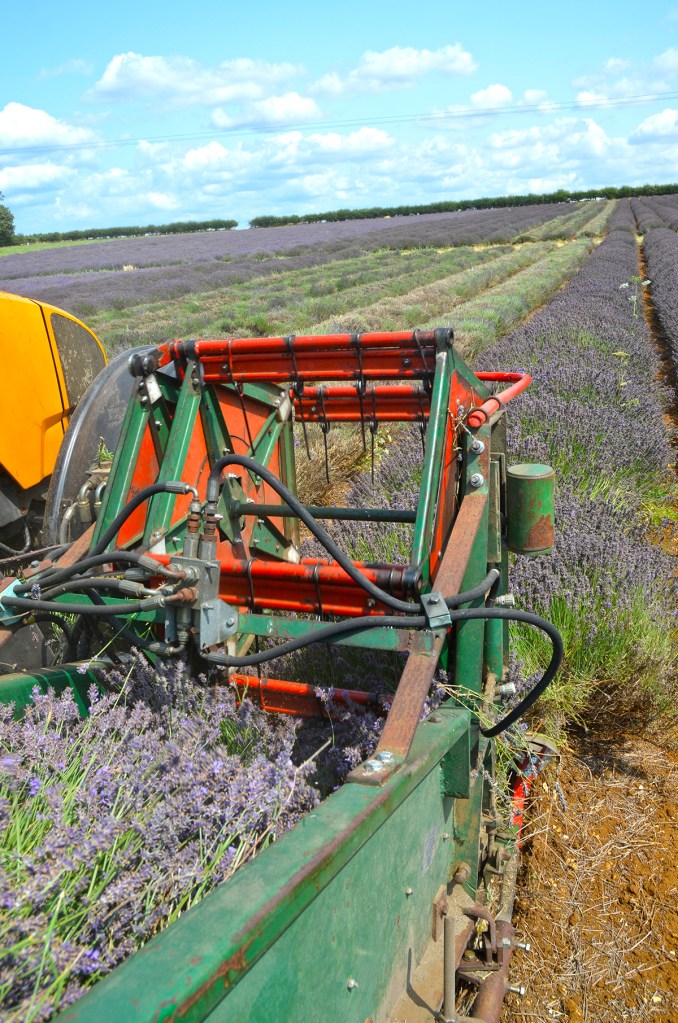
Keen to expand the business, they agreed to buy the 2002 Renault, and in between hedge cutting jobs, Ryan spent the next couple of months revising and servicing the tractor.
“The engine turned but there was a major fuel problem,” he says. The culprit, a leaking injection pump, was sent off for repair. A new starter motor was fitted, and a few electrical faults had to be addressed.
Satisfied with the tractor, attention then turned to the harvester, which is still owned by Norfolk Lavender.
“It was in a sorry state,” adds Ryan. It was already agreed that David Harrison would prepare it for action and very early one morning Ryan hooked it up behind the Celtis and drove it 38 miles to Ely.
Vandals had destroyed the electronics box so a complete rewire was one of the first jobs, and the picking reel and intake sails required a lot of work. New fingers and bushes were needed as were two new row dividers and knife sections. The oil tanks were also cleaned and refilled. All told, the bill to bring the harvester back to life ran to several thousands.
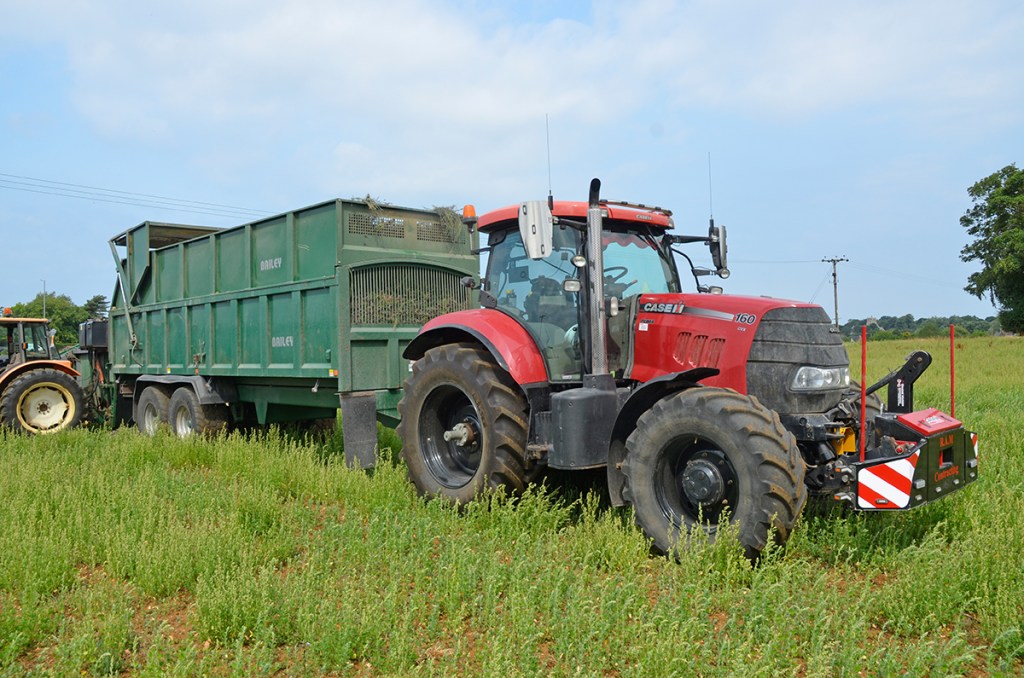
Reunion – but for how long?
Reunited with the Celtis in time for the July harvest, we caught up with the team towards the end of the four-week season. It has to be said, the mounted harvester is a nifty bit of British engineering, and the intake mechanism is clearly a nod towards the machine it replaced.
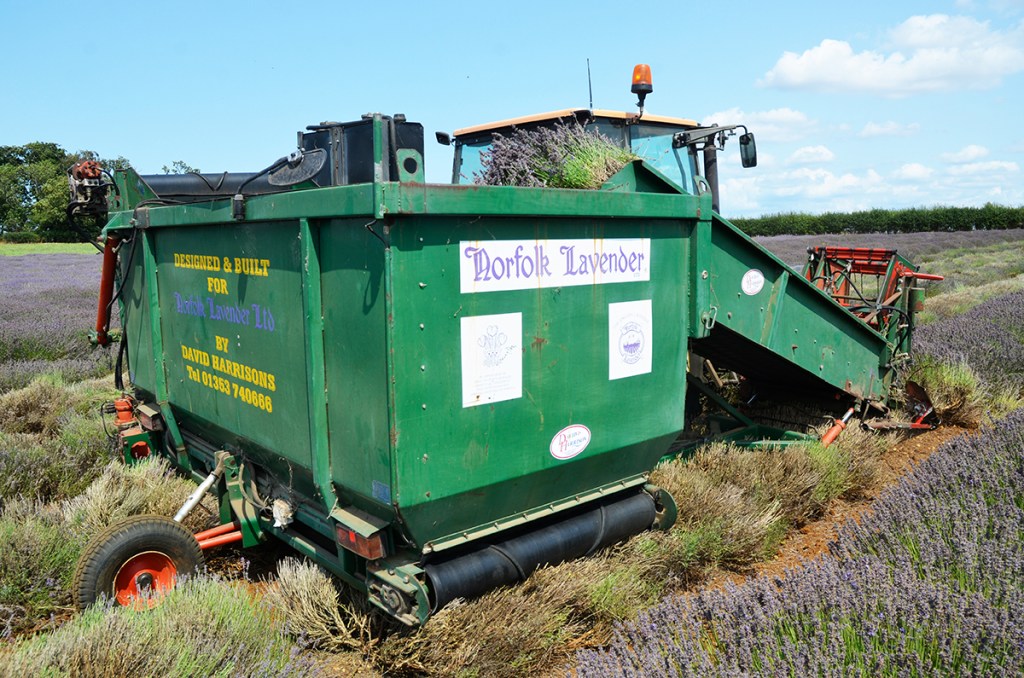
The slowest speed of the Celtis of around 1.0km/hr is just slow enough to give the noisy reciprocating knife time to slice the tops off one row at a time. When the hopper is full, the tractor has to pull out of work and trundle to the rear of the trailer to unload. The top of the hopper unloading belt is only able to reach the trailer floor, so shifting it to the front has to be done manually with a pitch fork.
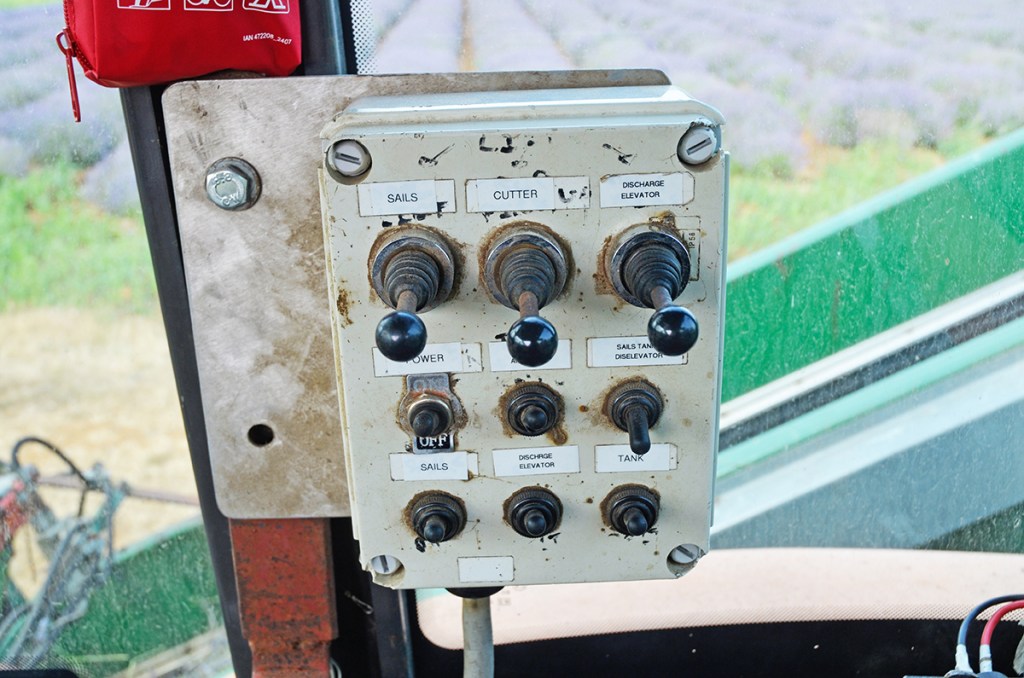
Lavender heaped up at the front of the trailer is dragged back down again when the tailgate is lowered to fill the rear. “It is an ideal trailer for the job,” says Ryan. “The silage sides on the trailer allow us to pack a lot into it.” Even so, it only holds 3.5-4.0t.
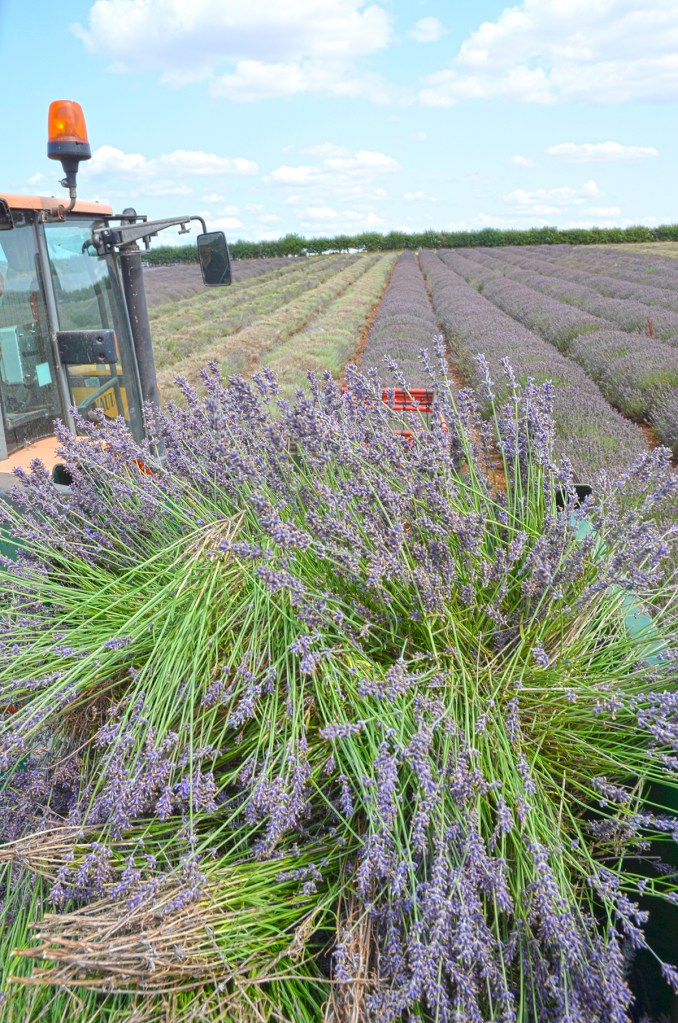
And here lies another Achilles heel with the harvester in that lavender is light and airy and the small lugs on the bottom hopper- and unloading belts tend to revolve below the material. This often needs to be teased up with a pitch fork into the rear of the trailer. Both belts really need more elevator slats or some form of tined concept.
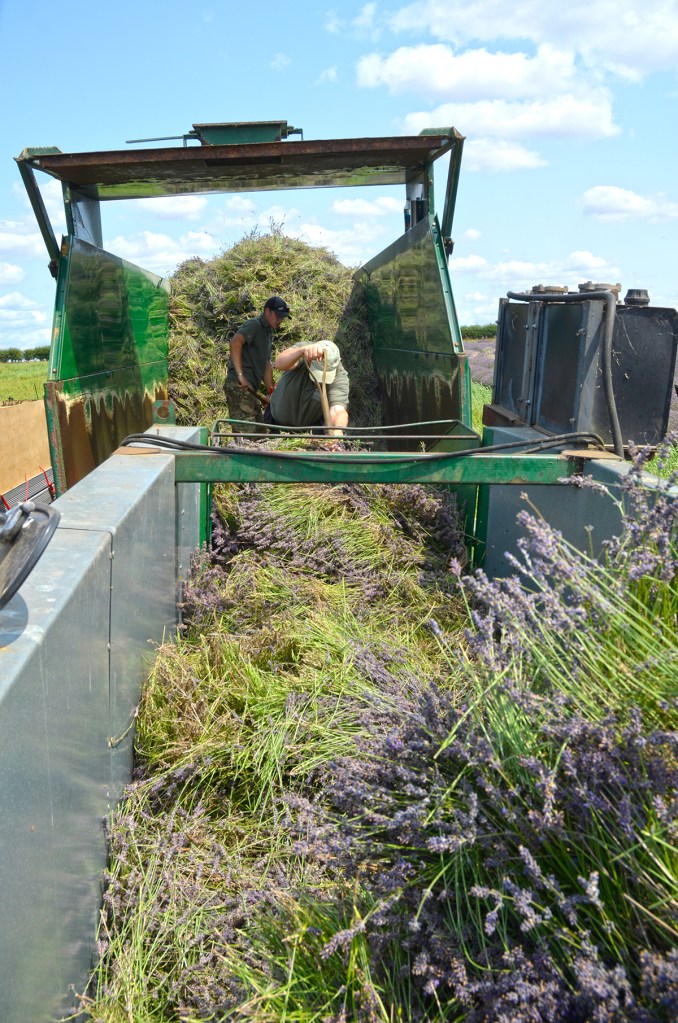
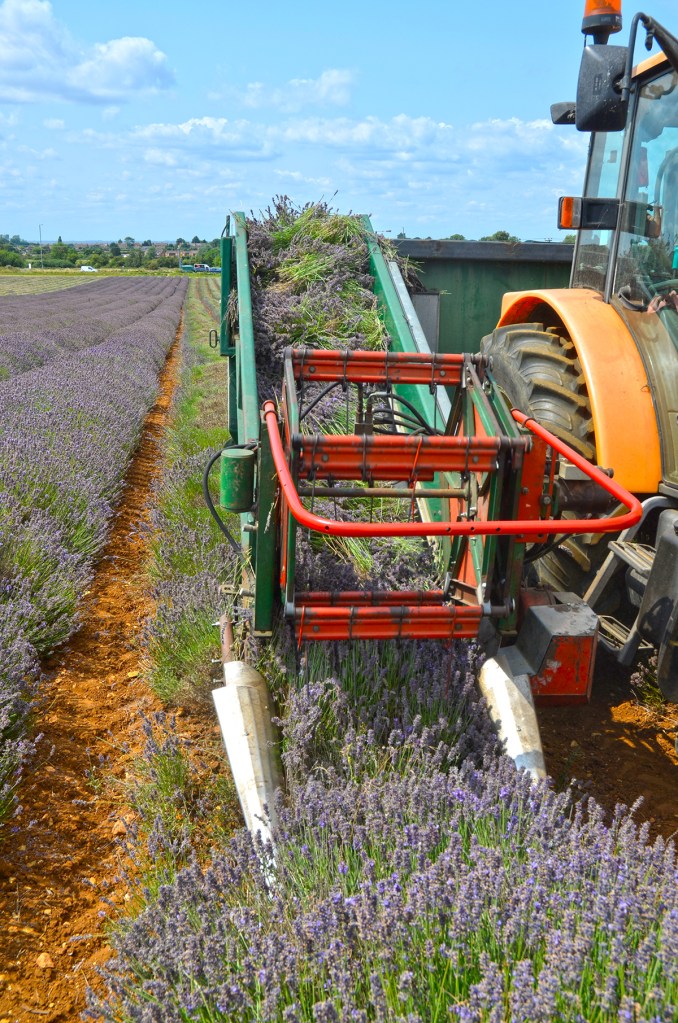
Ryan enjoys the lavender work, but the harvester is not without its issues. The main one is the cutterbar, which has snapped several times at the edges, requiring emergency welding. “The pressure appears to be in the wrong points. We will look at this over the winter.”
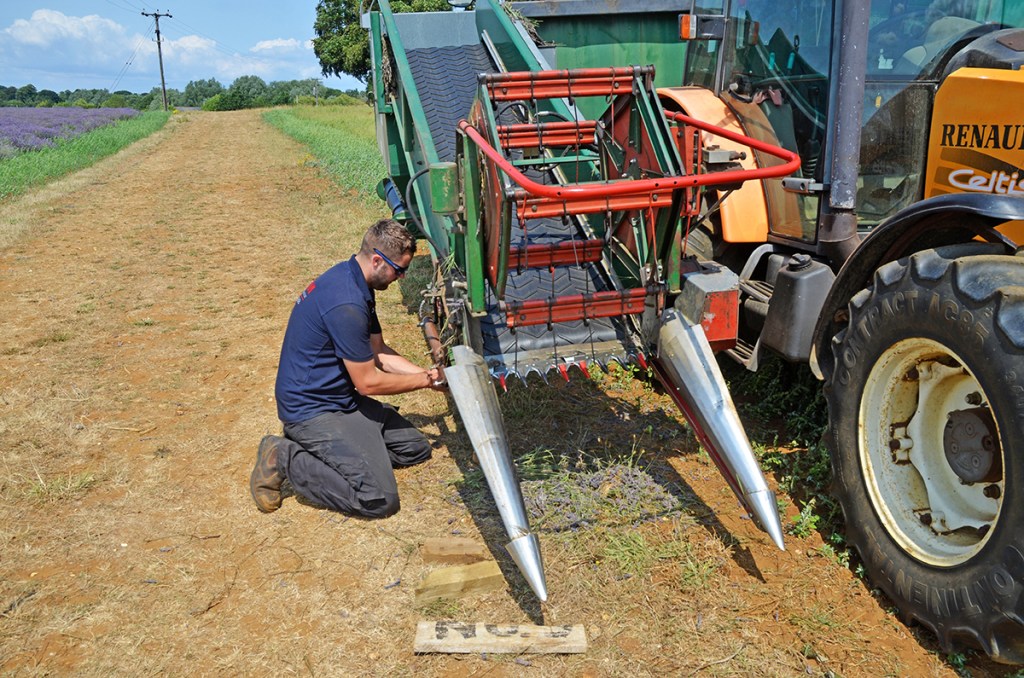
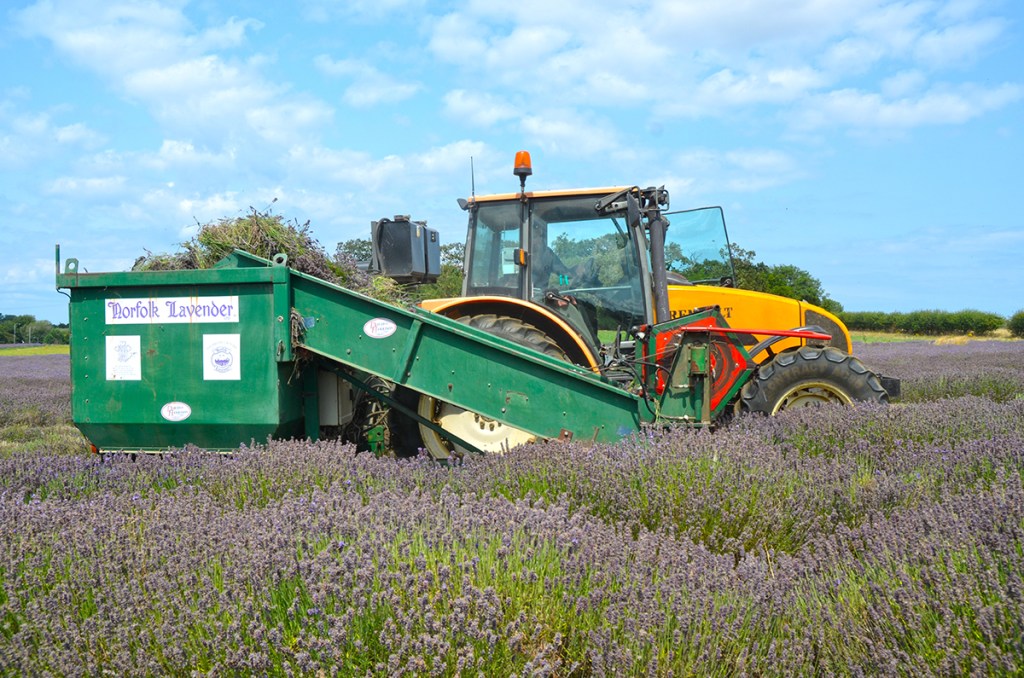
This season was the last that the Renault tractor powered the lavender harvester as the contractor is looking to swap it for another 160 to 200hp Case IH Puma CVX. The preference is for a 2016-2017 plated model. Having a tractor for just three to four weeks work a year is not the only issue. “The Celtis has no air-conditioning, so it’s not much fun on hot sunny days harvesting lavender,” says Ryan. “Also, there are no air brakes, the top speed is 40km/hr.”
Another change could see lavender from the harvester’s hopper emptied into boxes parked on the headland. Lifted and tipped into the trailer by a telehandler, this will certainly speed up the job.
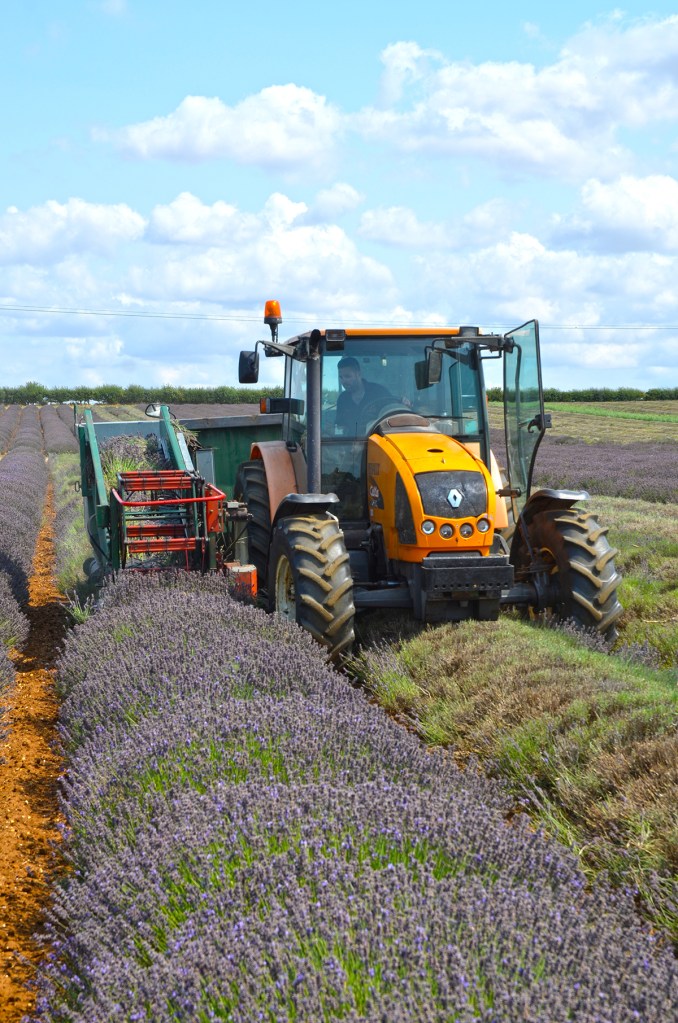
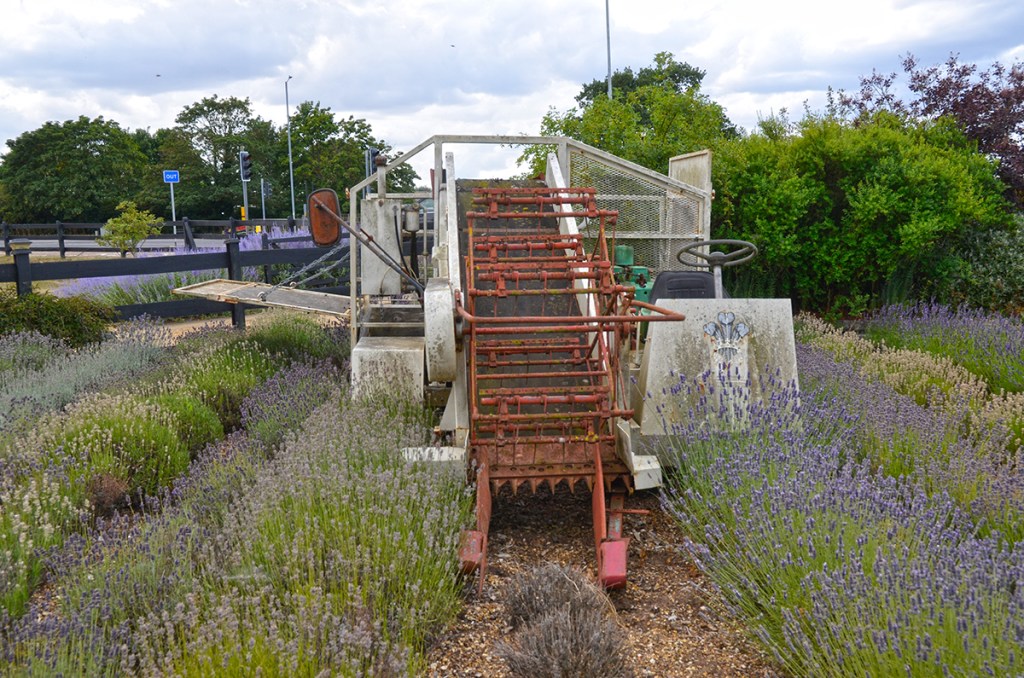
What’s it for?
Lavender is used in a wide range of different products. These range from essential oils to candles, perfumes and soap, to cleaning products and even chutney and beer. When lumped together, the UK lavender market is valued at around £250 million. Less than 5.0% of the crop to do this is home grown. The rest is all imported, so there would seem to be plenty of potential to increase the area.
Keen to expand, Norfolk Lavender is looking to increase the area in the next five years, and also contract grow the crop with local farms. The plan is to convert the farm to organic lavender in the future. “We are also keen to explore the possibilities with planting lavender with a companion crop, such as a herb,” comments chief operating office, Maria Vinen. “No-one is currently looking into this in the UK.”
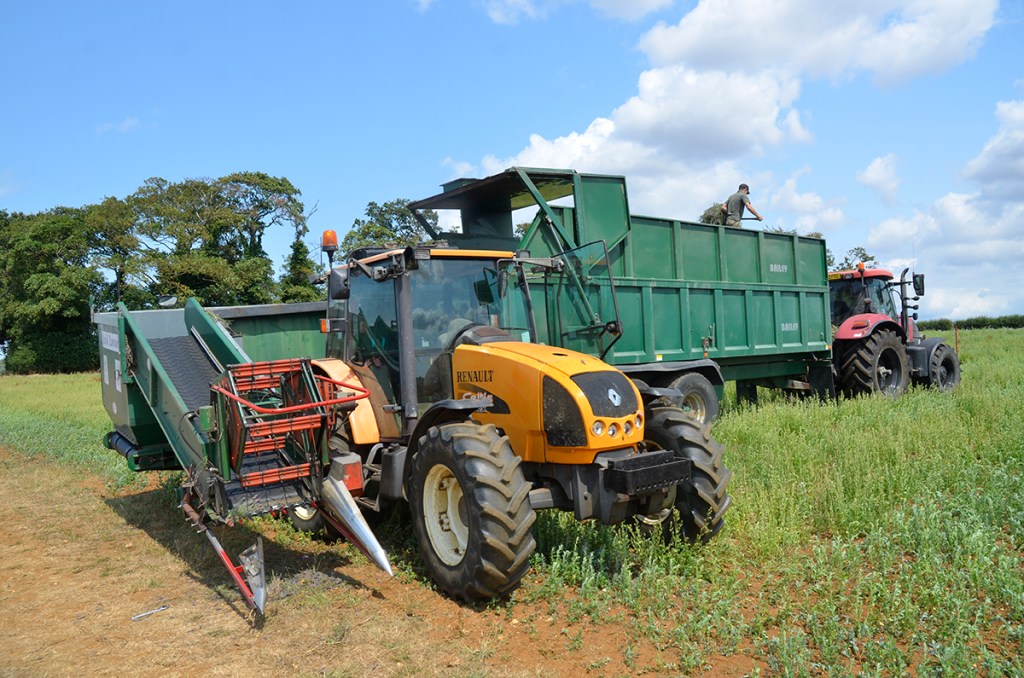
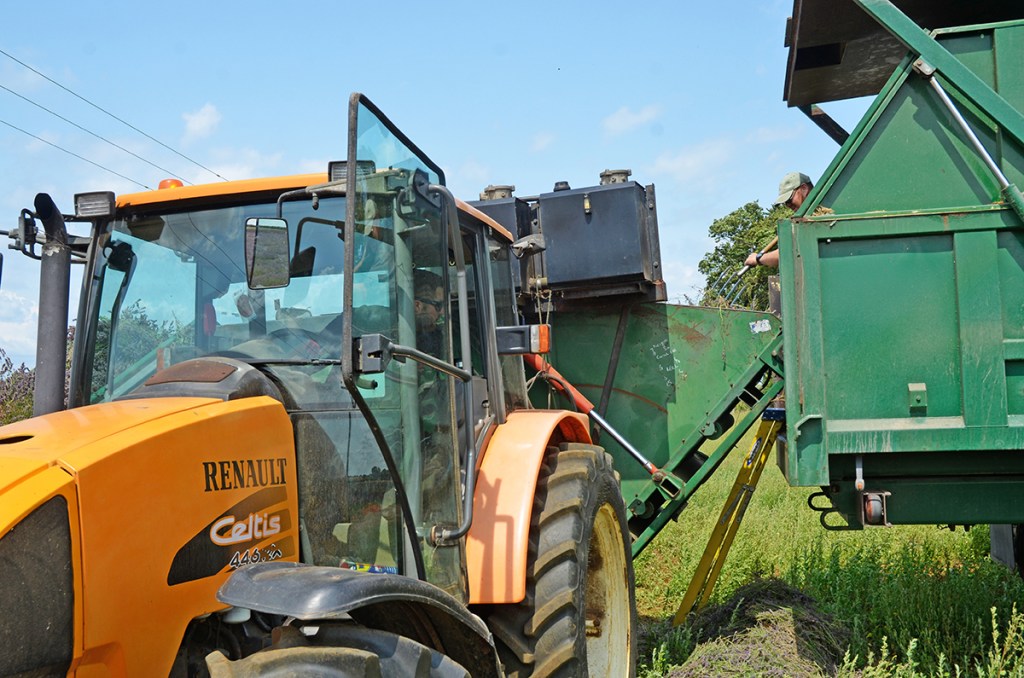
Maria is also pondering the farm’s next mechanical lavender harvester, and we are told to expect to see very different approach in the future. With a little bit of work, the current machine would appear to have plenty of mileage left in it, but given the planned increase in the area, the slow nature of the harvester and the short window of opportunity, then the single-row machine will struggle.
It remains to be seen whether David Harrison will be asked to make the successor or could Norfolk Lavender have a stab at the next machine? The only thing Maria is prepared to say now is that she is very interested in multi-row harvesting.
Special thanks to everyone at Norfolk Lavender and especially to John Emery for the tour and all the useful information.
Steven Vale
For more up-to-date farming news click here and subscribe now to profi and save.

